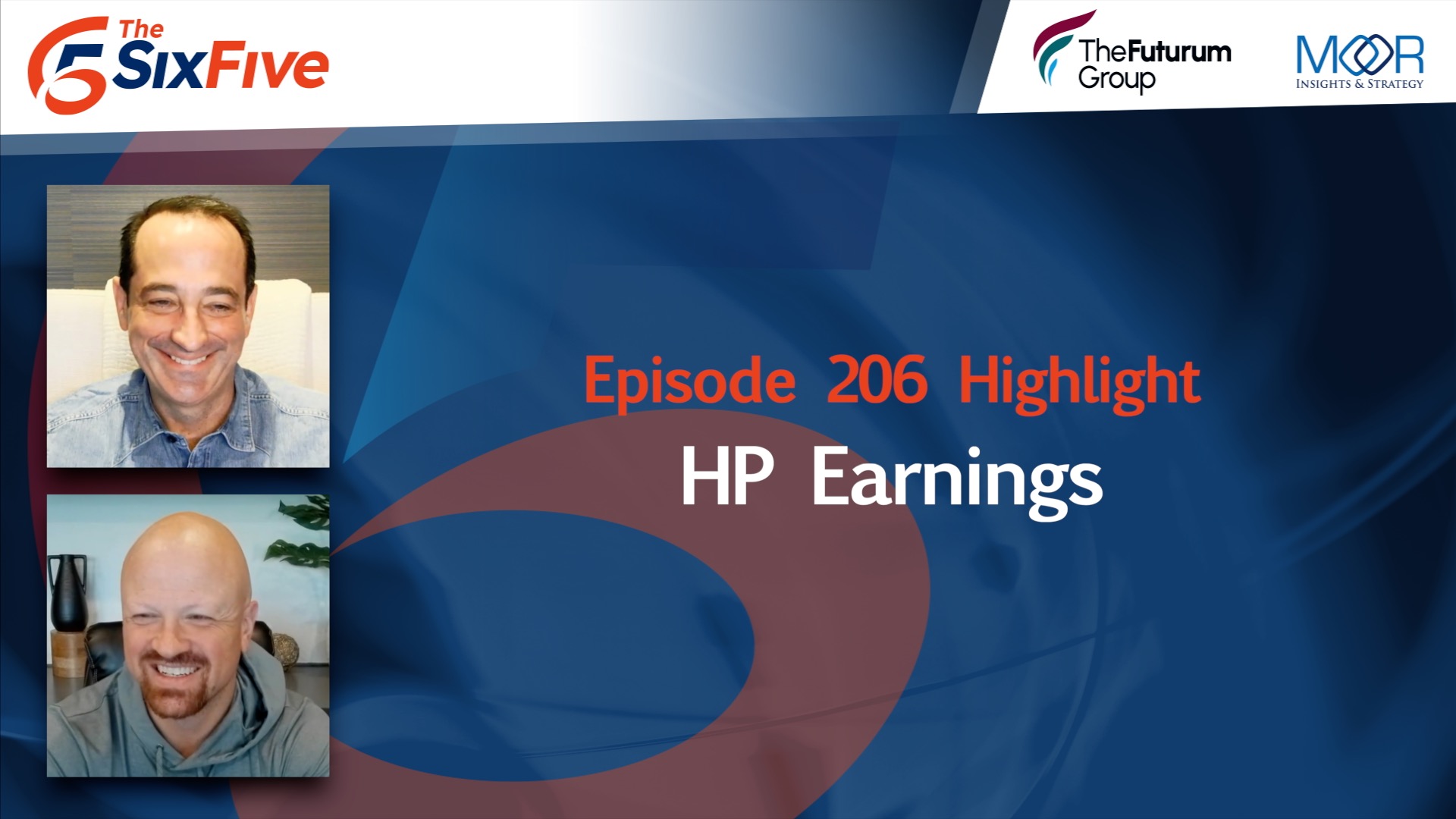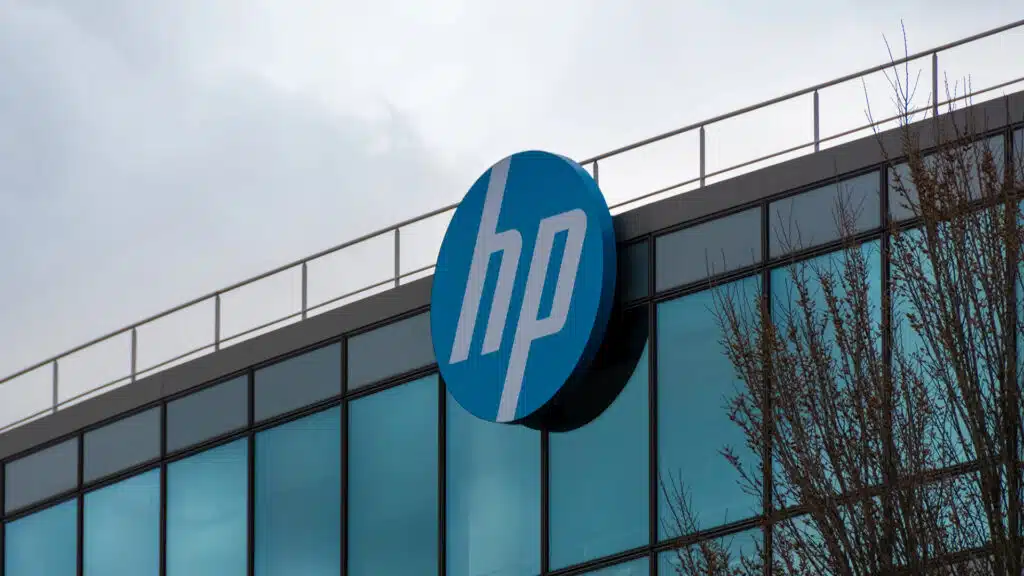The Six Five team discusses HP Earnings.
If you are interested in watching the full episode you can check it out here.
Disclaimer: The Six Five Webcast is for information and entertainment purposes only. Over the course of this webcast, we may talk about companies that are publicly traded and we may even reference that fact and their equity share price, but please do not take anything that we say as a recommendation about what you should do with your investment dollars. We are not investment advisors and we ask that you do not treat us as such.
Transcript:
Patrick Moorhead: HP earnings were-
Daniel Newman: Real time, Pat.
Patrick Moorhead: Yeah, where both you and I had the opportunity to talk to CEO, Enrique Lores. We were in Spain in a hotel. I don’t know, what was it, like a conference room or something?
Daniel Newman: Yeah, like a little conference room.
Patrick Moorhead: End of the day.
Daniel Newman: It was a little conference room. Yeah, we were hiding in a conference room. Pat, we don’t like to miss these calls. This stuff’s important to us. Hey, here’s a quick rundown similar to what we just talked about with HPE. HP no longer related really in any way except history. Now they had a met the street on earnings number and they fell a little bit short on the PC number. There’s an interesting inflection here, and we asked about this, and I think you and I have the right assertion to what’s going on. The PC correction in getting back to growth based on the longer term macros, but also based on the shorter term sell-in is real.
The sell-in has been substantial. We saw big client growth numbers from AMD from ARM, from Intel, that are indicative that this cycle for HP, the client computing spend is coming back, but it hasn’t fully returned. We’ve seen the inventory burn off. This was a big part of the trend line was these companies got socked with inventory when the slowdown happened and they spent a lot of their time trying to sell off. So they had to sell out before they could sell in again.
So we’re in the phase right now where you can believe new designs are being built, chips are being shipped, that’s creating momentum. But that’s not necessarily leading to recognizable revenue in the short term. It’s leading to either A, an increase in order books for some of these companies, or B, just a more optimistic tone from these CEOs that are saying the selling is coming, because they’re having to buy the silicon, which is why all those chip companies are seeing momentum.
He did say they gained share in certain parts of this PC, which is really important. Despite the fact that they didn’t even hit their revenue, that means they still outperformed in the category somewhat significantly. Now there’s a range of ASPs and of course different companies will tell you different things. Dell will tell you they may be seeding some share because they’re focused on higher end ASPs, selling prices on units.
But I tend to believe that every company wants to win at every ASP. It’s just deciding how badly you want to win and what margin, how much cash you want to be creating. My overall take, or maybe my most interesting inflection from the conversation was you and I think have this second half, 24 thing with AIPCs that we’ve both been talking about. I think maybe what’s come to my conclusion after these conversations, because we also spoke to Dell. I had some conversations with Dell as well. I think you did. We’ve been talking with Lenovo, others.
Is when that cycle becomes bigger for the OEMs, versus when it becomes big for the chip makers. I’m beginning to believe the second half of ’24 is going to be a chip-maker boom for PCs. But that the actual sellout that’s going to be required for an HP, Lenovo, Dell, Samsung and these others to see big growth, might not happen quite as quickly. And that’s just from these CEOs. What did Enrique Lores, CEO of HP, he really sees it be more of a ’25, ’26 tailwind for the company.
Patrick Moorhead: Yeah, trying to piece this together, and I’m going to focus on the PC group, not hit the printing group. It was just pluses and minuses. Both Dell and HP saw declines. Lenovo had gains. And while Lenovo didn’t come right out and say that PCs were up because IDG or phones, tablets. The size of the phone and the tablet businesses inside of Lenovo is very small. Lenovo had a 7% growth. Lenovo seems to be gaining market share and they seem to be gaining revenue share, which is fascinating to me.
The good thing for HP though, if you’re losing unit share and you’re losing revenue share, that’s a really sad place to be, but at least they gained a unit share. What I’m still just, I can’t figure out yet is how Intel was up 30%, AMD was up 60% in PCs, and most of the PC makers were down. And I know it’s not a one-for-one. But max, you’ve got about a six-week delay. And then you would expect the forecast to be up if all these chips are coming in. It could be just a mix shift.
Daniel Newman: Channel stuffing?
Patrick Moorhead: Possibly.
Daniel Newman: I don’t know, because like you said-
Patrick Moorhead: I’ve asked this question to every one of the companies and I haven’t gotten an answer yet from anybody other than it is an offset. I’m almost thinking that AMD and Intel might be stuffing the channel with it.
Daniel Newman: The prediction of growth or buying ahead? Risk reduction.
Patrick Moorhead: But wouldn’t that be coming out in the forecast, the PC makers? Anyways, I have more questions than answers here and to put a spotlight on the AI numbers… Wonderful, I missed or my bookmark here. Yeah, Antonio said, “Hey, three years after launch, AIPCs will be something between 40 and 60% of sales.” I got to tell you, that seems just so conservative to me. But then I step back and if you look at, I think most all of notebooks will be in AIPC. It’s the desktops that are a TBD because the processor makers are vacillating on do I put this capability into my silicon?
Which by the way might pretend to an opportunity for NVIDIA to come in here and put in cards or add-on cards to do that. But it just seems very, very conservative to me. Enrique did say it would start making the impact at the end of ’24, which this makes sense, because you’re going to see Qualcomm will be in there, and then you’ll have Lunar Lake and AMD there. But I know folks more questions than answers I have provided. I normally like to be the answer guy, but I’m still doing research on this.
Author Information
Daniel is the CEO of The Futurum Group. Living his life at the intersection of people and technology, Daniel works with the world’s largest technology brands exploring Digital Transformation and how it is influencing the enterprise.
From the leading edge of AI to global technology policy, Daniel makes the connections between business, people and tech that are required for companies to benefit most from their technology investments. Daniel is a top 5 globally ranked industry analyst and his ideas are regularly cited or shared in television appearances by CNBC, Bloomberg, Wall Street Journal and hundreds of other sites around the world.
A 7x Best-Selling Author including his most recent book “Human/Machine.” Daniel is also a Forbes and MarketWatch (Dow Jones) contributor.
An MBA and Former Graduate Adjunct Faculty, Daniel is an Austin Texas transplant after 40 years in Chicago. His speaking takes him around the world each year as he shares his vision of the role technology will play in our future.







